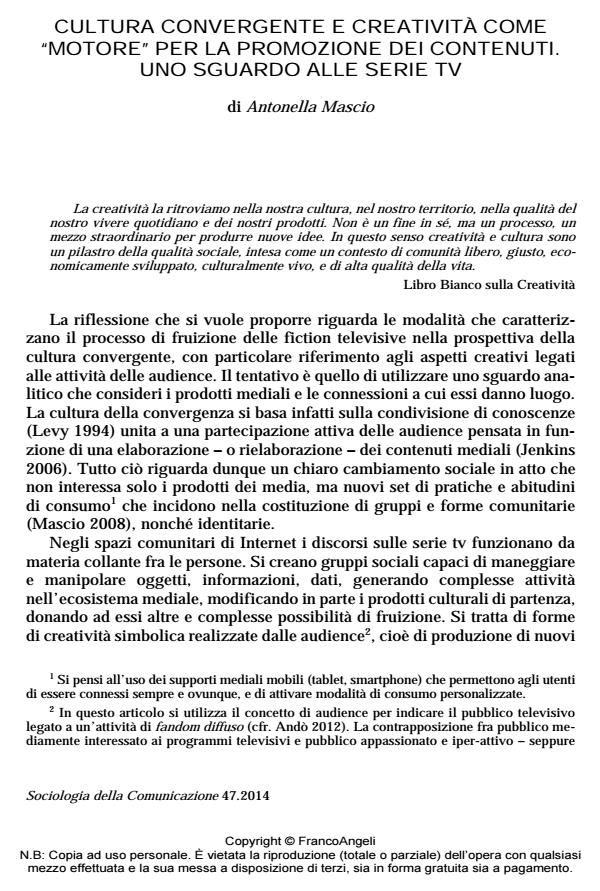Convergence culture and creativity as an agent of contents promotion. An overview on tv serials
Journal title SOCIOLOGIA DELLA COMUNICAZIONE
Author/s Antonella Mascio
Publishing Year 2014 Issue 2014/47
Language Italian Pages 15 P. 101-115 File size 85 KB
DOI 10.3280/SC2014-047009
DOI is like a bar code for intellectual property: to have more infomation
click here
Below, you can see the article first page
If you want to buy this article in PDF format, you can do it, following the instructions to buy download credits

FrancoAngeli is member of Publishers International Linking Association, Inc (PILA), a not-for-profit association which run the CrossRef service enabling links to and from online scholarly content.
The reflection that we want to present here concerns the methods characterizing the fruition processes of television dramas through the perspective of Jenkin’s Convergent Culture, focusing on the relationship between tv series and the related activities of online audiences. The discourses on the tv series, in fact, use to connect people in the community spaces of the Internet, producing forms of a widespread sociality which is able to move objects, information, data, generating complex media activities in the media ecosystem, partly modifying the original text while giving it other complex chances of fruition. These are forms of symbolic and vernacular creativity arousing from the audiences, where we observe productions of new meanings inherently related to feelings, energies, and emotions.
Keywords: Convergent culture, quality drama, tv cult, symbolic creativity, vernacular creativity, online audiences.
Antonella Mascio, Cultura convergente e creatività come "motore" per la promozione dei contenuti. Uno sguardo alle serie tv in "SOCIOLOGIA DELLA COMUNICAZIONE " 47/2014, pp 101-115, DOI: 10.3280/SC2014-047009